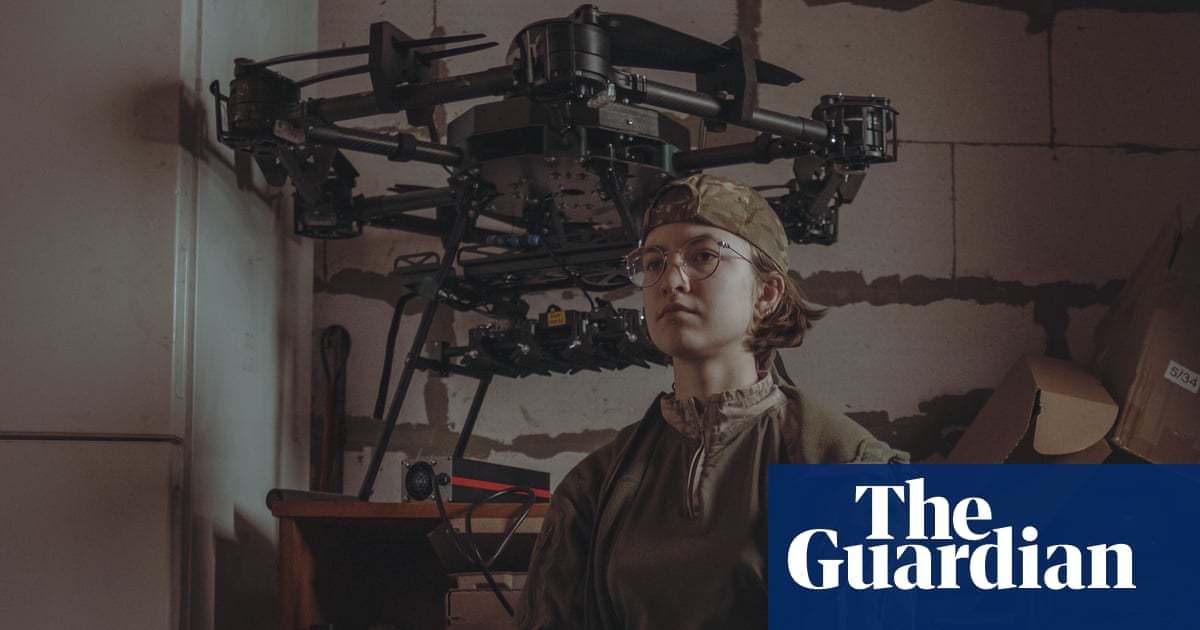Women have been involved in Ukraine’s drone operations since the early months of the full-scale invasion, but as shortages in the military increase their presence has grown, particularly in FPV (first-person-view) attack units.
Casualty figures are not disclosed but widely understood to be high, and Ukraine is becoming reliant on civilians to fill roles that once belonged to trained military personnel. A short but intensive 15-day course is given to a trainee operator for frontline deployment, a turnaround that reflects the urgent need.
There are no official figures for how many women serve as drone operators, but instructors and unit commanders estimate that several dozen are now active or in advanced training, with more joining each month.
Operators face significant danger as they work close to the frontline – often only a few kilometres from Russian positions – and are frequently targeted by artillery, drones and guided bombs.
Dasha did not expect to serve. She spent the first months of the invasion helping as a volunteer, then moved into drone work as more men from her region were killed or mobilised. “It wasn’t about whether I was ready,” she says. “It was about the fact that there were fewer people left.”
Her motivation, she insists, is simple. Her two children now live in Europe, and she wants them to return to a safe Ukraine. Her father, 89, survived the second world war. The weight of that history stays with her. “I don’t want my children to become the next generation of war children. That’s all the motivation I need.”
She now leads a mixed-gender unit operating a few kilometres from the eastern frontline. The atmosphere is one of exhaustion rather than heroism. “This isn’t about women proving anything,” she says. “It’s about necessity. Everyone is stretched. Everyone is adapting.”
Elisabeth’s first experience of the war was the sound. Her town came under repeated bombardment in 2022, and she spent weeks sleeping in stairwells and basements. “After a while you stop asking what you can do,” she says. “You ask what is still possible.”
Her FPV training coincided with a period of heavy losses in her region, and several members of her team were injured within months of deployment. The dynamic inside the units shifted quickly. “People stopped caring who was a woman or who wasn’t,” she says. “They cared who could fly.”
What she struggles with most is the psychological weight: the long hours, the constant threat of detection by Russian drones and the knowledge that every mission might involve killing, or losing someone she knows. “It doesn’t get easier,” she says. “You just get used to carrying it.”
Ilona enrolled at a civilian-accessible drone school after months of watching Russian aerial attacks intensify around her home. She had no military experience and little confidence she would fit in. “I thought drones were for professionals,” she says. “People who grew up with technology. Not me.”
The training centre keeps a low profile, changing locations after being targeted several times. Trainees accept this as part of the routine. “You understand very quickly that drone operators are hunted,” she says. “You feel it from the first day.”
What stands out most to her is not the danger, but the demand. Hundreds of people – many of them civilians – join the waiting lists for training each month. “So many men my age are already gone,” she says. “Someone has to take their place.”
